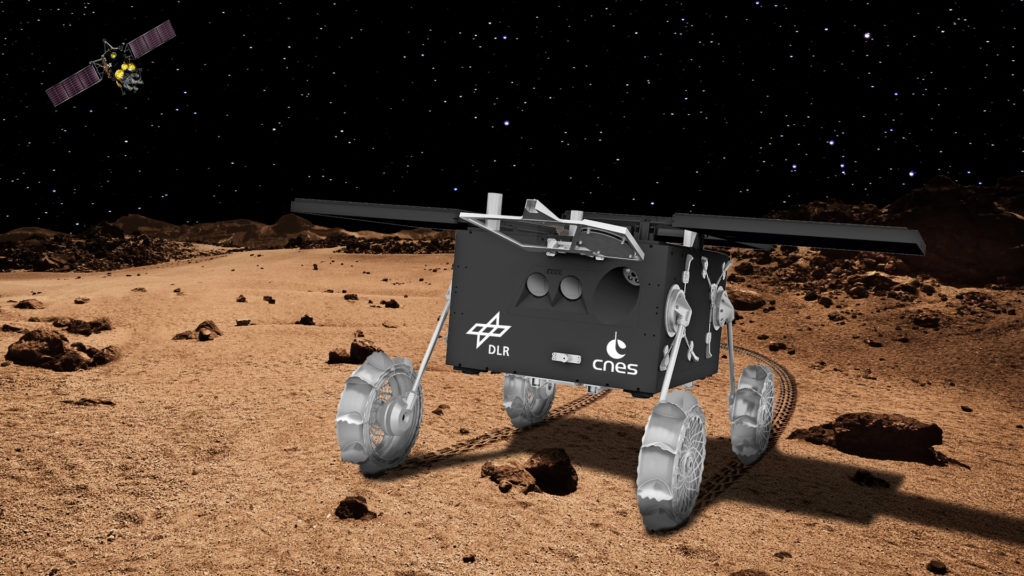Silicon Sensing Systems Ltd has been contracted by the German Aerospace Centre (DLR) to supply 2 miniature Pinpoint (CRM200) gyros for use in the Martian Moons eXploration (MMX) mission, which will travel to Mars and survey the two moons orbiting Mars.
These gyros will equip the rover vehicle that will explore the larger of these moons, Phobos, collecting vital surface samples.
The set of Pinpoint gyros is planned to be used to detect unintended movement of the rover on the unknown surface. Depending on the initial checkout of the drivetrain that includes the gyros, an optional safety module will be activated in the software to automatically prevent instability during drive sessions of the rover.
As part of the rigorous selection process for this programme, Pinpoint successfully completed TID testing at 17kRad Radiation and Proton tests (up to 68 MeV/proton), which clearly demonstrate the gyro’s suitability for space requirements.
The size of a small fingernail, at approximately 5mm x 6mm, PinPoint is the smallest gyro in Silicon Sensing’s MEMS product range. This is a low drift, single axis angular rate sensor with many applications across market sectors. In combination, these sensors can precisely measure angular rate across multiple axes – i.e. any combination of pitch, yaw and roll – whilst consuming little power.
David Sommerville, General Manager, Silicon Sensing Systems comments: “Pinpoint has a proven track record in space applications but this will be a landmark use on a remarkable mission where this gyro’s reliability and endurance will be critical.”
Somerville continues: “We are also seeing increasing space sector application for our latest tactical grade IMU – the DMU41 – which has recently been selected for a number of low earth orbit programmes. This growing interest in our MEMS-based inertial sensors and systems reflects the potential of this technology, with its rugged reliability, compact size and low power consumption, for the sector.”
The Martian Moons eXploration (MMX) mission is a mission of the Japanese space agency JAXA to explore the two moons of Mars with contributions from NASA, ESA, CNES and DLR. CNES and the DLR are jointly contributing a 25-kilogram rover. The German-French MMX rover is being designed and built under the joint leadership of the two partners. Approximately one year after leaving Earth the spacecraft will arrive in Martian space and enter into an orbit around Mars.
It will then move into a quasi-satellite orbit (QSO) around the Martian moon, Phobos, to collect scientific data, drop the rover and gather a sample of the moon’s surface. After observation and sample collection, the spacecraft will return to earth carrying the material gathered from Phobos. The current schedule has a launch date in 2026 followed by a Martian orbit insertion in 2027 and return to earth in 2031.






